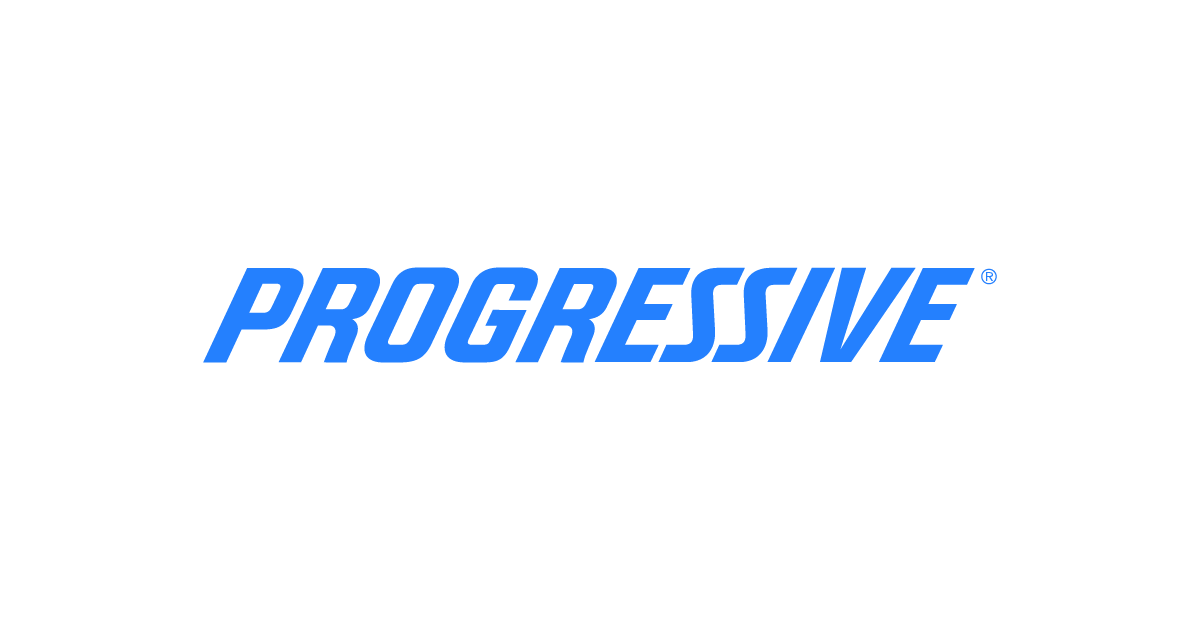Scoring a great deal on auto insurance isn't easy at any age, but when you're a young driver, there's an added challenge. Teens have less experience on the roads and are more likely to get in accidents, so car insurance for teens tends to be pricey. But scoring a great rate is still doable. This guide will walk you through how it can be done and which car insurers young drivers may want to take a closer look at.

Bottom Line
Allstate had the cheapest car insurance for teens in our analysis, though the difference was slight. One of the largest insurers in the nation, the company also offers solid car insurance coverage options and a variety of ways to save at any age.
Average Annual Cost
The following rates represent the average cost across the nation for teenage drivers with excellent credit and for personal use with Allstate:
- Average Annual Rate - $5,591

Bottom Line
State Farm bested all the companies listed here in J.D. Power's latest Auto Insurance Claims Satisfaction Survey. It also has some nice teen driver discounts that can help young drivers reduce their rates.
Average Annual Cost
The following rates represent the average cost across the nation for teenage drivers with excellent credit and for personal use with State Farm:
- Average Annual Rate - $2,488

Bottom Line
Progressive is famous for its Name-Your-Price tool, which helps drivers of all ages get the most bang for their buck. This tells drivers exactly what coverage they can afford based on how much they're willing to spend.
Average Annual Cost
The following rates represent the average cost across the nation for teenage drivers with excellent credit and for personal use with Progressive:
- Average Annual Rate - $5,457

Bottom Line
Geico offers a huge selection of discounts, including some specific to teens, like a good student discount for teens who maintain a B-average or better in school and a driver's education discount for teens who complete an approved course.
Average Annual Cost
The following rates represent the average cost across the nation for teenage drivers with excellent credit and for personal use with Geico:
- Average Annual Rate - $2,922

Bottom Line
Liberty Mutual doesn't offer the cheapest car insurance for teens, but it does have some less-common coverage options like new car replacement, gap insurance, and accident forgiveness. These may appeal to teens worried about their car or their insurance rates following an accident.
How much is car insurance for teens?
Car insurance for teens can be very expensive. When parents add a teen driver to their policy, industry estimates suggest costs increase around 150%. This means adding a teen to a policy originally priced at $1,500 annually would cause premiums to increase to $2250.
A policy for a teen driver also costs more than double what insurance would cost for older motorists. For example, average annual premiums for an 18-year-old are $5,988 annually, compared with $2,208 for a 35-year-old and $1,979 for a 65-year-old.
The table below shows average costs for teens depending on age and sex based on The Ascent's research.
| Age | Female | Male |
|---|---|---|
| 16 | $198 | $221 |
| 17 | $183 | $208 |
| 18 | $161 | $177 |
| 19 | $108 | $124 |
Insurance for teens is very expensive because:
- Teens lack driving experience, which creates an increased crash risk.
- Teens' brains are not yet fully developed and as a result, they are more likely to take risks that increase collision risks.
- Drivers under age 25 have higher DUI rates, which in turn increases collision risks.
- Teens are more likely to engage in distracted driving, which is a major risk factor for auto accidents.
- Teens are statistically more likely to become involved in serious crashes, with the Insurance Institute for Highway Safety indicating they have double the risk of a fatal collision.
Should teens be on their parents' car insurance policy?
Remaining on a parent's car insurance policy typically costs teen drivers less than trying to purchase their own, so it's an appealing option. Fortunately, there's no legal reason why teens can't be on their parents' insurance if the family's in agreement.
This gives a teen driver the benefit of any discounts their parents qualify for, like a multi-policy discount for bundling home and auto and a discount for continuous insurance coverage, that teens may not qualify for on their own.
Of course, adding a teen driver means higher rates for parents, so that's something each family has to consider. Parents wary of taking on the extra cost may have their teen pay the difference between their current premiums and their new ones.
There's no law about when a young driver has to get their own insurance, but in most cases, if they're living independently, paying for their own expenses, and driving their own vehicle, they should probably have their own policy.
Tips for finding cheap car insurance for teens and young drivers
Parents and teens who need help finding affordable insurance for young drivers should take the following steps:
- Try to keep a teen on a parent's policy. It can be much less expensive to add a teen to a parent's coverage than to buy a standalone policy.
- Shop around for insurance. Different insurance companies price policies for teen drivers differently. It's very important to get multiple quotes to avoid overpaying for coverage.
- Complete a driver's education course or defensive driving course. It's common for insurance companies to offer reduced premiums for teens who have received specialized driver training.
- Earn good grades. Good student discounts are generally available to teen drivers who earn a B average or better.
- Ask about other discounts. Many insurers provide savings for teen drivers who are members of certain organizations, so it's always worth asking about all of the different ways to save.
- Consider programs that track driving behavior. Some insurers allow motorists to install apps that track their driving and they make adjustments to premiums for those who demonstrate a strong safety record. When teens are eligible, using one of these apps could help to reduce premiums.
- Choose the right vehicle. Cars with anti-theft devices and with advanced safety features (such as collision warnings) can help to reduce premium costs, because these safety features reduce the risk of an expensive insurance claim being made.
- Behave responsibly behind the wheel. If a teen gets a ticket or is involved in any other incidents on the road, this can send rates skyrocketing. That's especially true as insurers have only a short driving history to go on when assessing how much risk a teen presents.
- Increase the deductible. If it is affordable for parents or teens, raising the policy's deductible could result in lower premiums. Be aware this could result in higher out-of-pocket costs if a claim is made.
Taking these steps can help to keep premiums down so insurance is as affordable as possible for young drivers.
Best car insurance for teens
Here are some of the best car insurance providers for teen drivers:
Overall cheapest car insurance for teens
Here's an overview of average monthly car insurance premiums, based on our analysis of quotes for drivers aged 16 to 19 from five of the best insurance companies.
| Car Insurance Provider | Average Monthly Premium for Teens |
|---|---|
| Allstate | $142.00 |
| State Farm | $142.91 |
| Progressive | $144.08 |
| Geico | $154.56 |
| Liberty Mutual | $254.65 |
Programs that help teenage drivers
There are many programs that help teenage drivers to reduce the risk of collisions. These include:
- The TeenDrivingPlan Program from Children's Hospital of Philadelphia: This program helps parents effectively supervise teen drivers, enables teens to identify specific driving goals to focus on, and helps parents and teens track their skill development as teens learn to drive.
- Alive at 25: This four-hour course was developed by the National Safety Council to teach teens about some of the biggest driving risks, including speeding, distraction, inexperience, and peer pressure.
- B.R.A.K.E.S.: This is a free defensive driving program designed for teens between the ages of 15 and 19 to help teens learn crash avoidance, off-road recovery exercises, and other hands-on skills that can reduce the risk of serious injuries and fatalities.
- teenSMART: This teaches situational awareness and helps new drivers learn to anticipate dangerous situations and assess risk behind the wheel.
Insurance companies may also provide resources for parents and teens, including information about driver's education and defensive driving courses that teens can take to reduce insurance premiums while learning how to be safer behind the wheel.
Compare premiums for auto insurance for teens
The data below gives parents and young drivers some idea of how much car insurance for teens will cost. But there are many other factors that come into play here, like what discounts a teen may qualify for and whether they have accidents on their record. The only way to know which company will offer a teen the best rate is to get some quotes.
Here's a closer look at the average cost of car insurance for teens with clean driving records, based on our analysis.
| Average monthly car insurance | Male | Female | |
|---|---|---|---|
| 16 Year Olds | $210 | $221 | $198 |
| 17 Year Olds | $195 | $208 | $183 |
| 18 Year Olds | $169 | $177 | $161 |
| 19 Year Olds | $116 | $124 | $108 |
Discounts on car insurance for teens and young drivers
Here are some discounts the best car insurance for teens offers to young drivers. Note that not all insurers have all these discounts and not all discounts are available in all states.
- Driver safety course discount: Young drivers who complete an approved defensive driving course may qualify for a discount.
- Good student discount: Students who maintain a B-average or better qualify for discounts with many insurers as their high GPA shows maturity and responsibility.
- Safe driver discount: Teens may not qualify for a safe driver discount immediately, but they may qualify for one over time, especially if they enroll in a telematics program that monitors their driving via a small device placed in the vehicle.
- Student away at school discount: College students who live elsewhere and only drive their vehicles when they're visiting home may qualify for a discount because they're putting fewer miles on their cars and thus, have a reduced risk of accidents.
These aren't the only discounts a teen driver may qualify for. Always check with an insurer for a full list of available discounts.
Tips for finding cheap car insurance for teens and young drivers
Finding affordable auto insurance for young drivers isn't always easy, but following these tips can help parents and young drivers find the best rate:
- Compare quotes from several insurers before making a purchase
- Inquire about discounts available to young drivers
- Consider joining a parent's policy
- Work to establish a safe driving record
| Offer | Best For | Next Steps |
|---|---|---|

Allstate
|
Great For: Best for Pricing | |

State Farm
|
Great For: Best for Claims Handling | |

Progressive
|
Great For: Best for Flexible Policies | |

Geico
|
Great For: Best for Student Discounts | |

Liberty Mutual
|
Great For: Best for Extra Coverage Options |
FAQs
-
Yes, car insurers will sell directly to teens, though in some states, the teen may need a parent to cosign. Going solo is usually more expensive than remaining on a parent's insurance policy, though, so it's not ideal for those trying to keep costs low.
-
There's no single company that offers the best car insurance for teens. But if parents and young drivers get some quotes, they can find the one that offers the best deal right now.
-
Every company calculates its rates differently, based on age, driving history, vehicle make and model, location, and more. So the only way to determine which has the cheapest rate for teenagers is to get quotes and compare them.
-
Most auto insurance policies cover teen drivers in their parents' vehicle even if the teen is not on the policy themselves. However, the teen must have the parent's consent to drive the vehicle in order for any claims to be covered.
-
It is usually cheaper for a teenage driver to be on their parents' car insurance policy than to be on their own policy, but it's up to each family to decide how they want to handle their teen's auto insurance.
Our Insurance Expert
We're firm believers in the Golden Rule, which is why editorial opinions are ours alone and have not been previously reviewed, approved, or endorsed by included advertisers. The Ascent, a Motley Fool service, does not cover all offers on the market. The Ascent has a dedicated team of editors and analysts focused on personal finance, and they follow the same set of publishing standards and editorial integrity while maintaining professional separation from the analysts and editors on other Motley Fool brands.